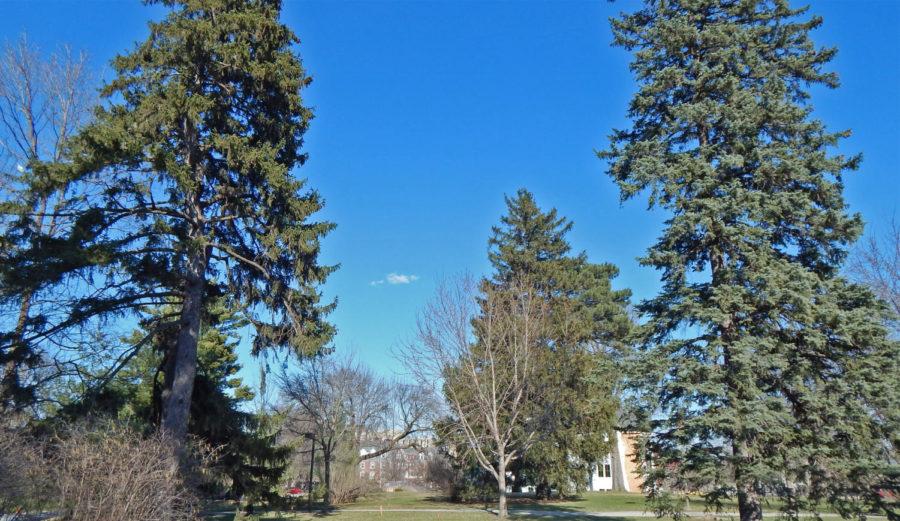New residence hall puts old trees on the chopping block
April 2, 2015
Iowa State’s campus will turn over a new leaf as the university prepares to build a new residence hall adjacent to Buchanan Hall … literally.
To make space for the new residence hall, which is projected to be ready for students in spring 2017, two nearly 200-year-old trees will be chopped down sometime before construction begins on May 11.
The mature trees include a 192-year-old hackberry and a 171-year-old black walnut. Both trees are native to Iowa and are some of the oldest trees on campus.
Both trees are said to be in great health for their age.
“The university as a whole has recognized the need to respond to increasing student enrollment to provide additional housing,” said Cathy Brown, assistant director of Campus Physical Planning. “One of the things we do when we start planning for new construction is we look for sites that make sense in the context of campus planning, campus activities, campus land use and those kinds of things.”
While students will reap the benefits of more housing, students in programs like landscape architecture and horticulture will also be impacted by the removal of the trees.
“Students in landscape architecture and horticulture as well other departments use the vegetation on campus to learn to identify species, so the landscape of the campus is literally a lab,” said Mimi Wagner, associate professor of landscape architecture.
Wagner said students benefit from having both young and mature trees on campus so they are able to see the vegetation in different stages of life.
Although moving trees can often be an option, Brown said in this case there were many factors that made moving the trees unlikely, including the high cost.
“In some situations, some might consider moving trees,” Brown said. “I would offer that in this situation with the size and the age of the trees and the complexities of moving them, we would hamper the livelihood to the extreme that we wouldn’t have the same trees when we were done.”
Although the hackberry and the black walnut will be two of the trees to meet the ax, around a dozen smaller trees from the site have been moved to areas around other residence halls on campus.
Brown said in addition to the dozen of trees that were moved, around 600 trees were planted on campus last year.
Despite the two mature trees being removed, there are still plans to keep much of the green space and vegetation around the site for student use after construction is complete.
These trees also aren’t the only ones of their species on campus. Currently, there are 115 black walnuts and 370 hackberry trees that can be found around Iowa State, Brown said.
Although the decision to cut down the trees is final, there may still be a way to recycle the wood from the two trees through a program called “TreeCYcle”.
“Some of the considerations we would make would be if we could use [the wood from the trees] in any way inside the building,” Brown said. “Can we make furniture out of it? We’ve had a history of making conference tables, benches, picture frames and a variety of others. It’s certainly something that the participants in the project will take into consideration.”
Brown said it is always important to try to pull out the positives of difficult decisions.
Despite the negative effects, Wagner said she still sees the positives in the situation.
“There are always going to be things that are positives and there are often things that are impacts,” Wagner said. “The world is not perfect and not all impacts can be avoided. It’s just important to recognize that we do need housing, but the downside is that these trees will need to be removed. Those are trade offs that people are always tasked with.”







